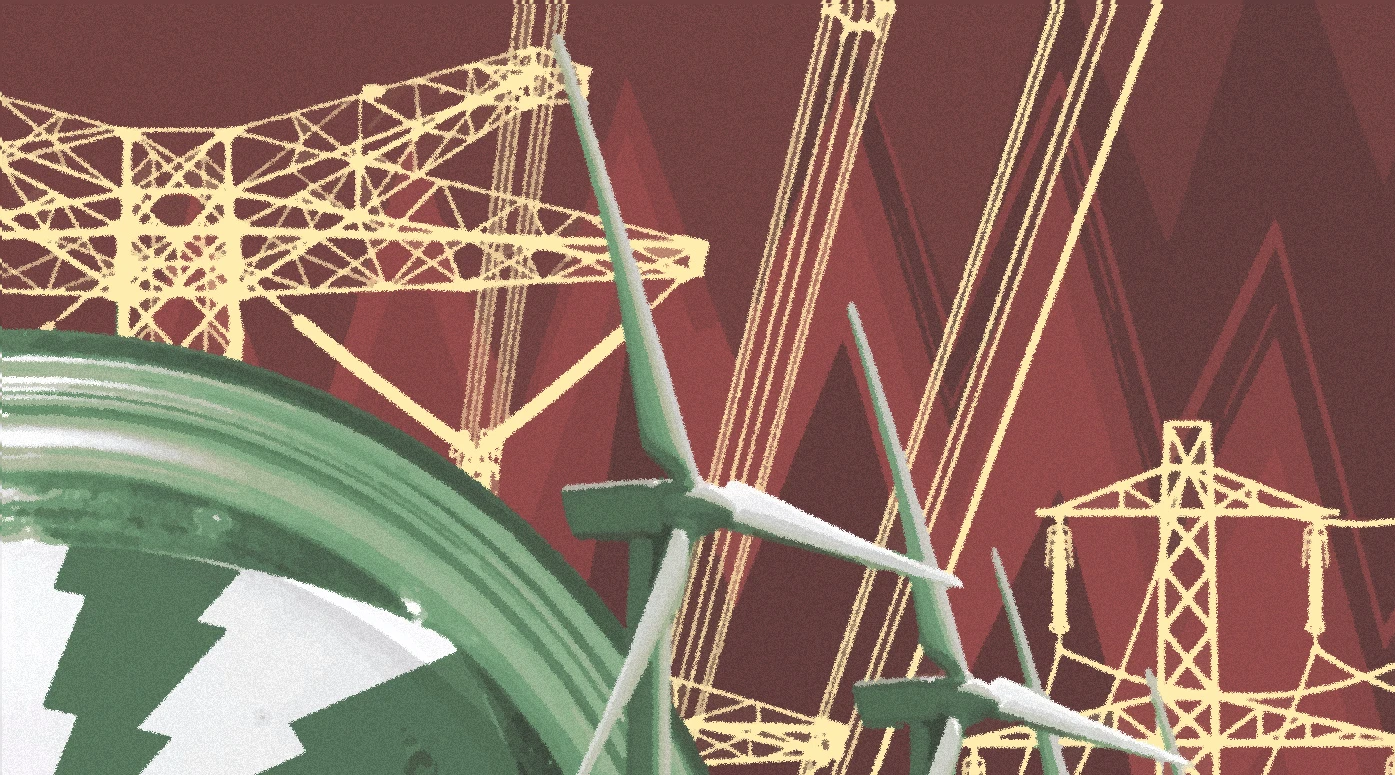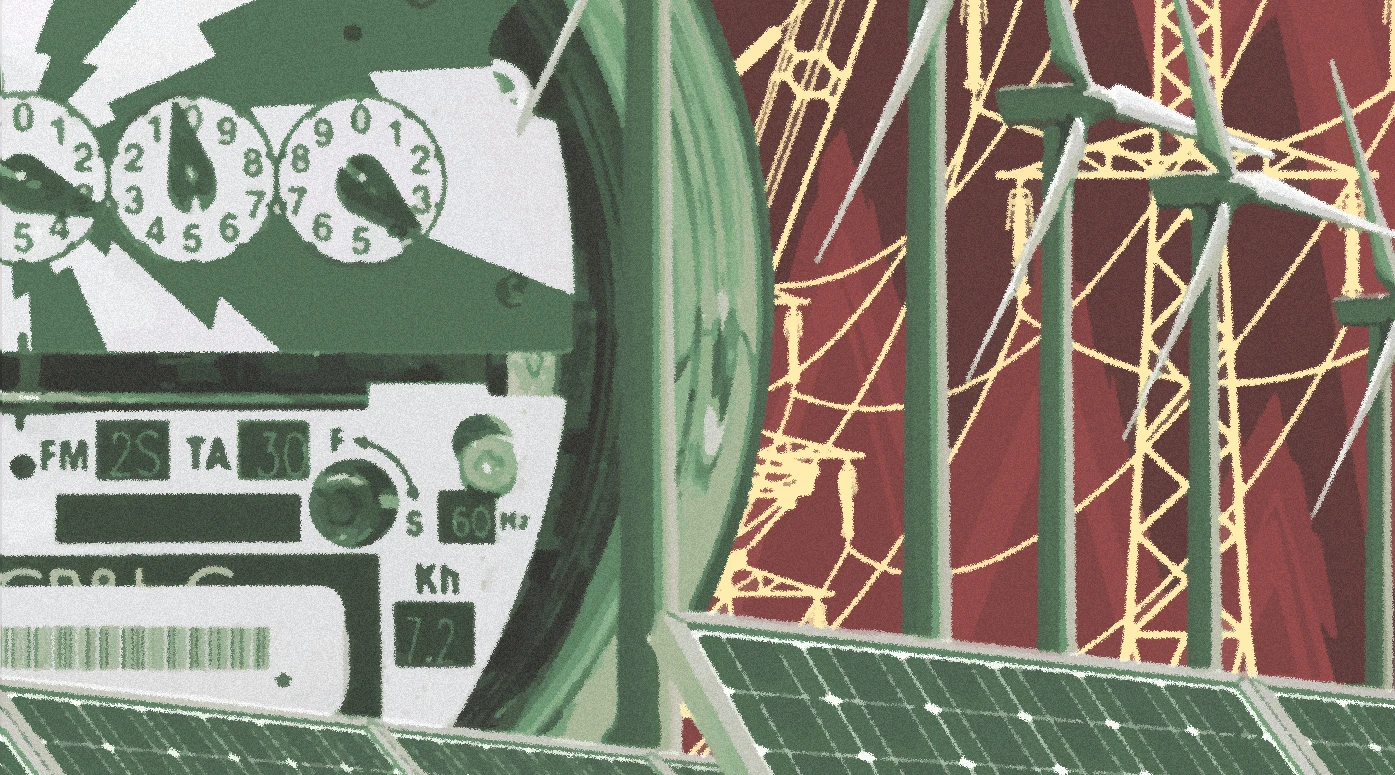Late last year, California instituted a revolutionary piece of policy. Starting in 2020, all new homes will be required to be built with rooftop solar panels and onsite battery storage. On top of that, developers would need to comply with a whole new host of codes to ensure the buildings will be as energy-efficient as possible. Solar providers like Sunrun, already meeting a steady churn of demand, started preparing themselves for a significant influx of work.
Less than three months after California’s rooftop solar mandate passed—currently, it’s the only one of its kind in the country—Representative Alexandria Ocasio-Cortez (D-NY) and Senator Ed Markey (D-MA) introduced the Green New Deal resolution. Suddenly, California’s radical policy felt like a warmup for larger efforts that could be in our future.
The Green New Deal calls for “meeting 100% of the power demand in the United States through clean, renewable, and zero-emission energy sources.” Ideally, this would happen before 2035: the year when the Intergovernmental Panel on Climate Change says we will have lost the chance to meaningfully slow global warming and its effects. While states like New York, California, Washington, and Hawaii have already set aggressive goals for fully shifting their energy supplies to renewable power, it will still be a steep ask: According to the Energy Information Administration, just under one-sixth of the energy supply in the country currently comes from renewable sources.
“Anything you can think of that requires burning gas, we need to electrify and power with renewable sources,” says Mark Jacobson, director of the Atmosphere/Energy Program at Stanford University. “It’s simple, but it will require a lot of work.”
This story is part of our series A Green New Deal for Business, looking at how the environmental and economic aims of the resolution might transform industries in the U.S. You can read more here.
The changes that the energy sector needs to undergo are one of the most critical components of the Green New Deal. But embedded in the immense challenge of meeting these goals is an opportunity to create a much more sustainable and equitable energy system.It also should spur more research and funding for new energy innovations beyond now-mainstream wind and solar. Transitioning away from fossil fuels, in the context of the Green New Deal, presents an opportunity to increase access to affordable clean energy for all, and create well-paying jobs in renewable energy industries in the process.

Considering the potential for job creation
All of this work, from rapidly installing rooftop solar to upgrading buildings, will require an enormous labor force. This is one of the crucial aims of the Green New Deal: The resolution wants to use the decarbonization of the economy as a way to stimulate it. Specifically, it calls for training programs to prepare people for employment in the renewable energy sector.
There are already a handful of initiatives under way in the U.S. that can act as models for projects that might take root under the Green New Deal, says Ben Beachy, director of the Sierra Club’s Living Economy Program, which backs the Green New Deal.
One is a statewide program in Illinois called Solar for All (SfA). Its aim is to dramatically increase the number of lower-income residents in the state with access to solar energy, and the cost savings associated with it. Years of activist campaigning ensured that SfA and its goals would be prioritized when Illinois’s Future Energy Jobs Act, which aims to grow the state’s supply of renewable energy generation and associated jobs, was passed two years ago. “There have been many things like this that activists on the ground have been pushing for for a long time, and now with the Green New Deal, they’re part of a national conversation,” Beachy says.
SfA, Beachy says, includes an employment readiness program that prioritizes training formerly incarcerated people, who often struggle to find a footing in the economy. DC Solar Works, a program created by Washington, D.C.’s Department of Energy & the Environment, is another example: Its aim is to increase access to solar benefits for 100,000 low-income households and reduce their energy bills by 50% by 2032. A solar industry training program gives a cohort of District residents on-the-job experience carrying out these installations.
GRID Alternatives, a nonprofit with national reach that helps implement clean energy installation and workforce training programs, is helping carry out the DC Solar Works program. GRID Alternatives has also been instrumental in helping both private companies like Sunrun and energy utilities in California expand rooftop solar across the state while creating job-training opportunities with every installation. “We’ve been able to bring this holistic approach of creating jobs and opportunities to all the investments California is making in solar,” says Stan Greschner, GRID Alternatives’s vice president of government relations and market development. “We’ve had a lot of success integrating workforce development directly into the deployment of clean energy.”
Programs like GRID Alternatives encapsulate the aims of the Green New Deal: They help speed a shift to renewables, prioritize low-income communities of color, and create jobs in the process. “They ask the essential question of: For whom? Who will feel the benefits, whether it be the economic benefits of jobs created, or savings from slashed energy bills?” Beachy says.
He also points to the fact that renewable energy job training programs could help transition workers previously in the fossil fuel industries. This is already happening across the country, especially in regions like Appalachia that have long been dominated by coal. It’s essential, Beachy says, that the shift away from fossil fuels prioritizes the needs of workers whose jobs will be affected. Transforming old fossil fuel infrastructure like coal-fired plants into renewable generation sites, like a solar farm, could create an immediate influx of new jobs and the potential for re-training. But getting buy-in from communities, he adds, is essential. It will also involve close collaboration with labor unions that are specifically cited in the Green New Deal as an important part of the transition. However, some labor leaders in industries like mining and energy reportedly have felt that they were left out of the planning process leading up to the release of the Green New Deal resolution. They’ve expressed that going forward, unions that represent workers in those industries should have a seat at the table in planning for the shift to clean energy.

An industry-wide transition
Of course, decarbonizing the economy will require much more than building out access to solar and career opportunities. But solar, says Greschner, “is a central technology that creates all these add-on benefits.” Solar, he adds, can’t scale without good storage. Development and investment around battery technology will continue to improve as solar scales up. It also will encourage development of grid modernization technology, either to manage the influx of renewables into the existing grid, or to build out microgrids that can power communities entirely with renewable energy.
Looking at solar, Greschner says, gives a sense of how quickly clean energy can and should scale up in the U.S. Currently, solar accounts for around 2% of energy generation capacity in the country, but over the next decade, the industry has set a goal to ramp that up to 20%. “We’re talking about going from around 250,000 solar employees to over 600,000 in a decade,” he says. “This is a lot of training and retraining and upskilling that will happen in the solar industry alone.”
That growth, Grescher adds, doesn’t even include other renewables like wind and hydropower, nor does it account for other technologies vital to decarbonizing the whole economy, like grid modernization, energy storage, or electric vehicle infrastructure. Jacobson estimates that all of these areas have the potential to create 2.3 million new and well-paying jobs, even when you account for the jobs that might be lost in the transition. “That would also create more revenue for the government, because people are taxed on their earnings,” he says. It’s important to note, adds Bryce Smith, CEO of LevelTen Energy, which connects companies with renewable power, that the growth in renewables is “the course the industry is on with or without the Green New Deal.” But the framework is a way to ensure the equitable impact of this growth, and accelerate it even more.
It’s vital that career training and a focus on equity is built into these shifts. There are signs this is already happening: Rhode Island became the first state in the country to establish an offshore wind project in 2016, and the state’s labor and job-training department is now building out a career pipeline program for students at local schools who are interested in the offshore wind industry. Greschner says the whole energy sector has a lesson to learn from GRID Alternatives’s work in integrating workforce development into clean energy deployment.

Why the clean energy access gap needs to close
Like so many things in the U.S.—good healthcare, quality education, and an affordable place to live—access to clean energy sources is often demarcated along economic and racial lines. A major priority of the Green New Deal is ensuring that everyone in the U.S. has access to affordable, clean energy. By these metrics, the country has a long way to go. This year, researchers at University of California, Berkeley, found that despite 50% year-over-year growth in the solar industry overall since 2012, communities of color are not feeling the benefits. The researchers analyzed demographic data against a list of existing and potential sites for rooftop solar arrays under Google’s Project Sunroof (a tool that helps residents or building managers calculate cost savings from installing solar). They found that even if income levels are consistent across census tracts, black- and Hispanic-majority neighborhoods have installed, respectively, 69% and 30% less rooftop solar than the average. In contrast, white-majority census tracts have installed 21% more. Racial disparities in income and homeownership (which is often a prerequisite for installing rooftop solar) lie at the root of this gap, which you can also see in indigenous communities across the U.S.
It’s not just rooftop solar where this racial and economic divide becomes evident. Community solar, which lets multiple users subscribe to a large solar array installed at a remote location, doesn’t have a great track record of reaching low-income people of color. A 2018 report found that the majority of community solar projects do not include low-income subscribers.
This is especially troubling because low-income people of color will be most negatively affected by climate change. Marginalized communities are already exposed to disproportionate pollution levels, and less resilient (due to lack of investment and financial resources) in the face of natural disasters. And right now, they’re often the people who have to devote the largest portion of their income to their energy bills. Any electricity bill that totals over 6% of a person’s income is considered unaffordable, but it’s not uncommon for lower-income people to have to pay 10%, sometimes as much as 20%. The reasons for this are twofold. One: Because they earn less income, a standard bill will take out a larger percent. And two: Their houses or apartments often lack upgrades, like better insulation, electric appliances, or smart energy systems, which can deliver savings.

Access for all is a mandate, not an option
The common refrain among energy experts like Jacobson is that the technology exists to make renewable energy like solar possible accessible for all. Jacobson says that current technologies like solar, hydropower, and wind are advanced and scalable enough to replace fossil fuels, without question. “Those are the ones that work, and we don’t really have a choice,” he says. (He believes a transition to 100% renewable energy is possible without more controversial sources of non-fossil-fuel power like nuclear.)
So the mandate under the Green New Deal, he says, would be to swiftly ramp up capacity in these categories. This will require significant funding from governments and private investors alike, and must be carried out in a way that prioritizes people commonly disadvantaged in the energy market.
Initiatives like Solar for All are a good example of how this can be done. SfA contains four subprograms designed to increase solar access in low-income communities. There’s a subsidy program for residential rooftop solar, and another that offers discounts for existing community solar subscriptions. The program will also seed money to solar nonprofits and community organizations, and will create a fund to help new community solar pilot projects get off the ground. SfA will work with a variety of local solar providers to ensure they’re compliant with the program and aligned with its equity aims. Money for the program comes out of a renewable energy fund managed by the state, and financed through charges on utilities and energy suppliers.
Similarly, California’s rooftop solar mandate is made possible, in part, by the fact that the state has a designated pot of money from its cap-and-trade program to support it. The state is using that money to offer financial incentives to homeowners and building managers of multi-family buildings so both low-income homeowners and renters can avail of solar’s cost-savings on their energy bills. For-profit providers like Sunrun have pledged to help meet the state’s goal. They can do without creating costs to residents by leasing out their solar arrays, and collecting the incentives from the state. The costs of technology like solar have come down substantially enough in recent years so that incentives are not as crucial to deployment or scaling as they once were, says Alex McDonough, Sunrun’s vice president of public policy. “But for access for low-income people, incentives from the states and governments are going to remain important,” he says.
On top of these programs that boost direct access to solar energy, Jacobson says cities and states should consider subsidy programs to help homeowners and building managers upgrade their properties to be as energy efficient and renewable-energy-compliant as possible. Houses that rely on propane heat will need to convert to electric-powered systems that are driven by clean energy, and this transition must happen in a way that does not create outsized cost burdens on residents, especially if they’re already living on low incomes.
To bring about a full transition away from fossil fuels and toward 100% clean energy, every sector and layer of the economy has a role to play. Jacobson estimates the overall cost of this transition to be around $9.5 trillion. Venture capital needs to continue to identify and support emerging technologies in the clean energy space. Substantial financial support from both governments (as California and Illinois are already doing) and foundations must be targeted to help new and existing technologies meaningfully scale.
Experts like Jacobson and those like Beachy and Greschner that have been working in the environmental and economic justice spaces for years acknowledge that the transition will be difficult, but all agree that that the opportunities embedded in this challenge far outweigh the cost. The energy savings associated with a complete transition to renewables will ultimately pay for itself, and eradicate the associated health and societal costs of fossil fuels. He estimates that in the long term, the overall costs of a fully renewable system will be one-sixth that of what staying with fossil fuels will cost. That, and the equity potential of the switch, number among what he says are “plenty of causes for optimism” around a 100% clean energy economy.
Recognize your company's culture of innovation by applying to this year's Best Workplaces for Innovators Awards before the extended deadline, April 12.
